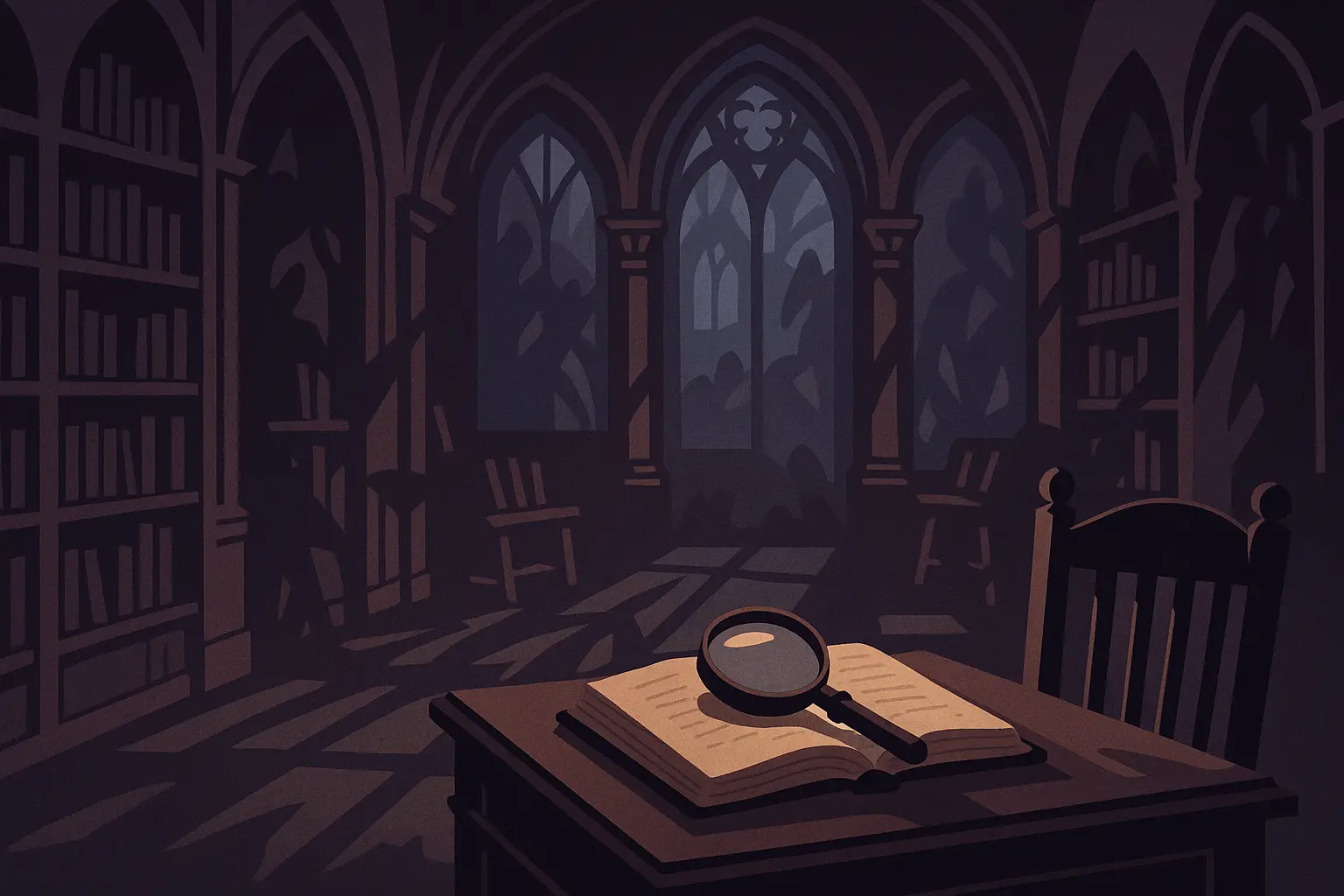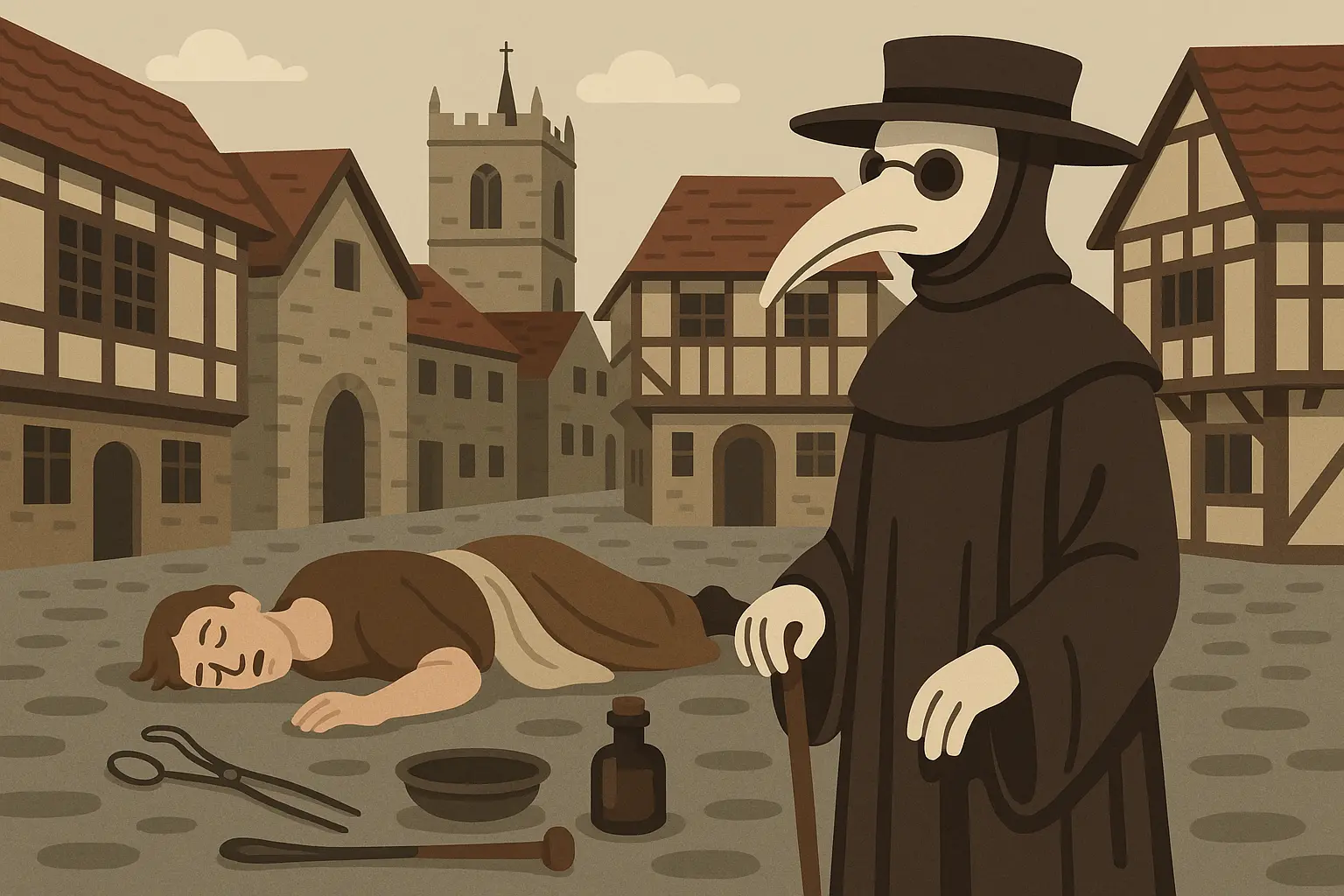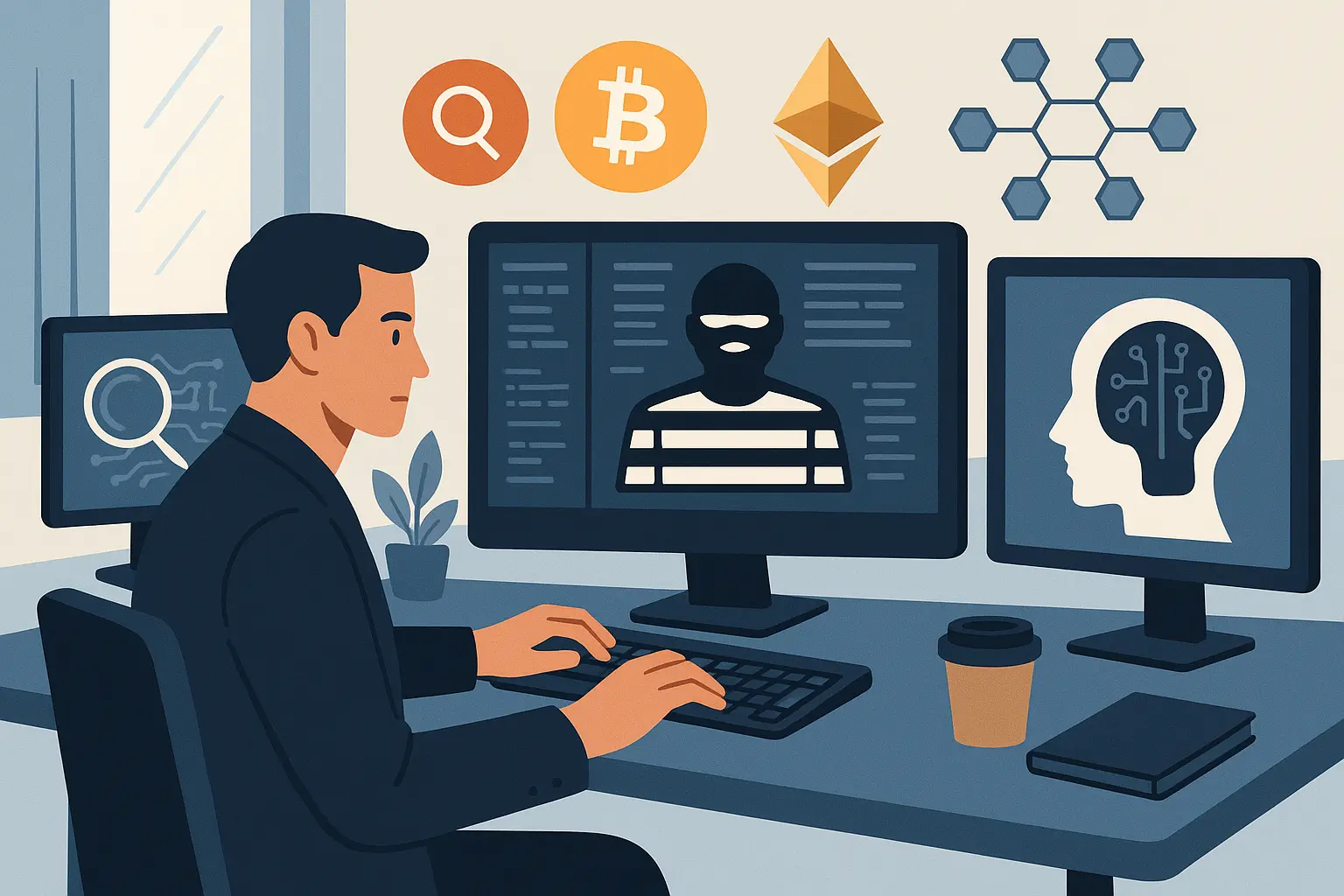Let’s be honest – there’s nothing quite like that moment when you’re three pages from the end of a mystery and suddenly everything clicks. You know the feeling I’m talking about, right? Mystery stories continue to captivate readers worldwide, with thriller/mystery/crime genres combined ranking as the most popular book genres in the US. According to recent industry data, within fiction, 12.5% of adult books sold (print and ebooks) are in the thriller genre, making an estimated 23.6 million in thriller print unit sales as of 2022.
I remember discovering my first mystery novel at age twelve – a dog-eared copy of Agatha Christie’s “And Then There Were None” that my grandmother left on her coffee table. That book hooked me instantly, and I still get goosebumps thinking about that first Christie reveal. I’ve been chasing that same feeling of suspense and revelation ever since, and I’ll admit, I’ve been completely wrong about the killer more times than I care to count. Whether you’re a seasoned mystery enthusiast or just beginning your journey into the world of whodunits and psychological thrillers, finding the right story can transform your reading experience from ordinary to extraordinary.
Table of Contents
-
What Makes a Mystery Actually Worth Your Time
-
Classic Detective Fiction Stories
-
Psychological Thriller Stories
-
Cozy Mystery Stories
-
Hard-Boiled Crime Stories
-
Historical Mystery Stories
-
Contemporary Crime Stories
-
Detailed Analysis of Complex Mystery Stories
-
Story Analysis Using Selection Criteria
-
Final Thoughts
TL;DR
-
Quality mystery stories balance plot structure, character development, fair clue distribution, atmospheric settings, and innovative approaches to traditional formulas
-
The 25 featured stories span six distinct categories: classic detective fiction, psychological thrillers, cozy mysteries, hard-boiled crime, historical mysteries, and contemporary crime
-
Complex psychological thrillers and historical mysteries offer rich, multi-layered narratives for experienced readers
-
Cozy mysteries and classic detective stories provide accessible entry points while maintaining sophisticated plotting and character development
-
Contemporary crime stories address modern issues including cryptocurrency fraud, social media stalking, and AI-generated content manipulation
-
Each story category offers unique pleasures and craft lessons for both readers and aspiring writers
What Makes a Mystery Actually Worth Your Time
Look, choosing a great mystery isn’t rocket science, but there are definitely some things that separate the page-turners from the “meh, I’ll finish it someday” pile on your nightstand. You know those mysteries where you feel like the author is hiding crucial information? Yeah, those drive me crazy too.
Here’s the thing about good mysteries – they play fair with you. No pulling rabbits out of hats at the last second. The best mysteries make you feel like a detective genius when you catch that tiny clue everyone else missed, and they don’t require a PhD in medieval history to solve the puzzle.
Understanding what makes compelling mystery stories requires examining the fundamental elements that create engaging narratives. For writers looking to craft their own mysteries, exploring powerful story themes can provide the conceptual foundation necessary for developing complex, multi-layered plots that keep readers guessing until the final revelation.
|
Selection Criteria |
What to Look For |
Red Flags to Avoid |
|---|---|---|
|
Plot Structure |
Steady pacing, logical clue distribution, satisfying resolution |
Info dumps, rushed endings, convenient coincidences |
|
Character Development |
Multi-dimensional protagonists, believable motivations |
Perfect detectives, one-dimensional suspects |
|
Fair Play |
Clues available to readers, solvable puzzles |
Withheld information, specialized knowledge requirements |
|
Setting & Atmosphere |
Environment enhances tension, logical constraints |
Arbitrary locations, distracting descriptions |
|
Innovation |
Fresh takes on classics, unique techniques |
Complete formula abandonment, gimmicky approaches |
Plot Structure and Pacing Excellence
You know that feeling when you’re reading and suddenly realize you’ve been holding your breath? That’s good pacing. The best mysteries don’t info-dump everything in chapter two or save all the good stuff for the last ten pages. They’re like that friend who tells amazing stories – they know exactly when to reveal the juicy details and when to make you wait.
Take something like “Murder on the Orient Express” – Christie uses that train journey like a ticking clock. You know they’re going to reach their destination, and Poirot better figure this out before then. Modern mysteries do the same thing with conference weekends, theater productions, or even just the countdown to someone’s wedding. It’s all about creating that “we’re running out of time” feeling without being obvious about it.
Consider how Agatha Christie’s “Murder on the Orient Express” uses the train’s journey as a natural countdown timer. The confined space creates urgency while allowing systematic investigation of each passenger. Modern mysteries can apply this same principle – whether it’s a conference weekend, a theatrical production’s run, or a countdown to a major event that creates natural time pressure and contained suspect pools.
Character Development That Drives Investigation
Here’s the thing about mystery protagonists – they can’t be perfect. Perfect detectives are boring. Give me someone who’s brilliant at solving crimes but can’t figure out their own love life, or someone who notices every clue but keeps forgetting to eat lunch. Those little human touches make you actually care whether they catch the killer.

And please, mystery writers of the world, give your suspects real reasons for acting suspicious. We’ve all met enough genuinely weird people to know that “acting strange” doesn’t automatically equal “committed murder.” The best mysteries make you understand why everyone behaves the way they do, even when their behavior is completely bonkers.
Fair Play Clue Distribution
This is huge for me. I cannot stand mysteries where the detective suddenly pulls some crucial piece of information out of thin air in the last chapter. It’s like playing a game where someone keeps changing the rules without telling you.
The golden rule is simple: if the detective knows it, you should know it too. That doesn’t mean everything gets spelled out for you – part of the fun is putting the pieces together yourself. But you shouldn’t need a PhD in medieval history or advanced chemistry to solve the puzzle. If specialized knowledge is required, a good mystery will teach you what you need to know along the way.
Atmospheric Settings That Enhance Mystery
Setting isn’t just window dressing in a good mystery – it’s practically another character. A locked library creates totally different investigative challenges than a busy farmers market. Smart authors use these differences to their advantage instead of just picking locations that sound cool.
Think about it: urban environments give you different types of evidence than rural ones. Historical settings limit what kind of forensics you can use. Contemporary stories can play with digital evidence and social media. The key is matching the setting to what the story needs, not just throwing your characters into a random spooky mansion and hoping for the best.
Classic Detective Fiction Stories
If you’re the type who loves a good puzzle and gets satisfaction from methodical problem-solving, classic detective fiction is your jam. These stories are like comfort food for mystery lovers – familiar ingredients prepared with skill and care. From locked-room mysteries in academic settings to vanishing performers and poison plots at elegant gatherings, each story respects genre conventions while incorporating contemporary elements including digital forensics and modern security systems.
The stories feature competent detective figures who use systematic approaches to uncover truth, whether they’re professors investigating campus crimes or specialists applying technical expertise to traditional mystery scenarios.
Classic detective fiction demonstrates the power of structured storytelling, where each clue builds toward an inevitable conclusion. Writers interested in creating their own detective stories can benefit from studying effective short story examples that showcase how to develop compelling mysteries within limited word counts while maintaining all the essential elements of the genre.

1. The Locked Library Mystery
Picture this: a prestigious university librarian dies in a locked rare books room. Sounds like something straight out of an Agatha Christie novel, right? But this one brings it into the modern world with security cameras and digital records, while still giving you that classic “how the heck did the killer get out?” puzzle.
Professor Elena Vasquez has to navigate academic politics (which, trust me, can be more cutthroat than corporate boardrooms) while figuring out who had access to manuscripts worth millions. The university setting works perfectly because everyone has legitimate reasons to be in the library, but also plenty of motives for murder – tenure disputes, research theft, academic rivalries. It’s like a soap opera with footnotes.
2. The Vanishing Violinist
A world-famous violinist disappears during intermission. Not after the concert, not on the way to the venue – during the fifteen-minute break when everyone’s stretching their legs and checking their phones. Detective Marcus Chen gets thrown into the competitive classical music world, which turns out to be way more dramatic than you’d expect.
The concert hall setting is brilliant because it’s contained but not claustrophobic, and the musical compositions themselves become clues. You don’t need to be able to read music to follow along, but you’ll definitely learn some interesting things about how composers hide messages in their work.
3. The Midnight Train Enigma
This is basically “Murder on the Orient Express” for the tech age. A Silicon Valley entrepreneur dies on an overnight train, and digital forensics expert Sarah Kim has to solve it before they reach the destination. The confined space creates that classic mystery atmosphere, but the investigation uses modern techniques like analyzing deleted files and tracking digital footprints.
What I love about this one is how it updates the train mystery formula without losing what made the original concept so compelling. You still get the ticking clock element and the limited suspect pool, but now you’re dealing with cryptocurrency and corporate espionage instead of just family secrets and old grudges.
4. The Bookshop Cipher
An elderly bookshop owner dies and leaves cryptic messages hidden in rare manuscripts. His cryptographer niece has to decode them while dodging dangerous collectors who want the books’ secrets. It’s like a treasure hunt crossed with a murder mystery, set in the kind of dusty bookshop that makes you want to spend entire afternoons browsing.
The puzzles are actually solvable if you pay attention – no advanced mathematics required. The author does a great job of explaining the cryptographic methods without making it feel like a textbook. Plus, if you’re the type who loves bookstores and hidden compartments, this one will hit all your buttons.
5. The Garden Party Gambit
Someone gets poisoned at a charity garden party in full view of fifty guests. It’s the classic “locked room” mystery except the room is a beautiful garden and everyone saw it happen – they just don’t realize what they saw.
Detective Inspector James Morrison has to piece together witness testimony and modern forensic evidence to figure out how the killer pulled it off. The elegant setting contrasts perfectly with the violence, and you’ll find yourself suspecting everyone from the caterer to the charity organizer.
Psychological Thriller Stories
If you’re into stories that mess with your head and make you question everything, psychological thrillers are where it’s at. These aren’t your straightforward whodunits – they’re more like “what the heck is actually happening here?” These mystery stories delve into the complexities of human psychology, featuring unreliable narrators, morally ambiguous situations, and investigations that challenge characters’ understanding of reality.
From neuroscientist protagonists questioning their own memories to priests struggling with confidentiality versus prevention, each story examines how psychological pressure affects decision-making and perception. The category emphasizes character development and internal conflict while maintaining mystery elements through psychological manipulation and emotional revelation.
Psychological thrillers often employ first-person narration to create intimate connections between readers and unreliable protagonists. Understanding how to effectively use first-person storytelling techniques can help writers master the psychological complexity that makes these mystery short stories so compelling and emotionally resonant.

6. The Memory Thief
Dr. Sarah Chen discovers someone is stealing memories from patients using experimental technology she helped develop. But here’s the kicker – she starts questioning her own memories. Are her flashbacks real, or has someone been messing with her brain too?
This one is genuinely unsettling because you experience Sarah’s confusion firsthand. When she can’t trust her own memories, you can’t either. It’s like being the unreliable narrator’s sidekick, trying to figure out what’s real from a bunch of potentially false information. The neuroscience stuff is fascinating without being overwhelming, and the ethical questions about memory manipulation will stick with you long after you finish reading.
7. The Perfect Neighbor
Suburban mom Lisa Chen becomes convinced her seemingly ideal neighbor is hiding something dark. The investigation spirals into obsession as Lisa starts following her neighbor, checking social media obsessively, and generally behaving like every true crime podcast listener’s worst nightmare.
The brilliant thing about this story is that you’re never quite sure if Lisa’s suspicions are justified or if she’s having some kind of breakdown. The suburban setting makes everything feel more unsettling – shouldn’t this be the safe place where nothing bad happens? The social media elements feel authentic rather than forced, and you’ll probably recognize some of your own online stalking behaviors in Lisa’s investigation methods.
8. The Confession Booth
A priest starts receiving confessions that seem to predict future crimes. Does he break the sacred seal of confession to prevent violence, or does he honor his religious vows and let terrible things happen?
This one really gets under your skin because there’s no clear right answer. The moral dilemma is genuine, and the episodic structure of the confessions builds tension beautifully. You’ll find yourself arguing with the priest’s choices even as you understand why he makes them.
9. The Sleepwalker’s Dilemma
A woman is found dead in her locked apartment with no signs of struggle. Her insomniac neighbor becomes the prime suspect, but what if the real issue is that nobody can trust their own perceptions when they’re sleep-deprived?
The apartment building setting creates this intimate, claustrophobic atmosphere where everyone knows too much about each other’s business. The sleep science is genuinely interesting, and you’ll probably start questioning your own sleep habits after reading this one.
10. The Digital Doppelganger
A social media influencer discovers someone has created an exact duplicate of her online presence, posting content that mirrors her life in disturbing ways. As the digital stalking escalates to real-world threats, she has to figure out who’s behind it while questioning what’s real versus performed in her own identity.
This story taps into very current anxieties about online privacy and authenticity. The investigation follows logical digital forensics procedures, but the real horror is how easy it is for someone to steal your entire online identity. If you’ve ever worried about your digital footprint, this one will give you chills.
Cozy Mystery Stories
Sometimes you want murder without the gore, mystery without the nightmares. Cozy mysteries are like a warm hug with a side of murder – all the puzzle-solving satisfaction without the graphic violence or existential dread. These mystery stories emphasize community relationships, amateur detectives, and gentle storytelling without graphic violence or explicit content, featuring small-town settings, craft-based communities, and protagonists who solve crimes through local knowledge and personal connections rather than professional law enforcement training.
Each story incorporates specialized knowledge – from quilting traditions to antique collecting – that provides both clues and cultural context. The category focuses on character relationships and community dynamics, using familiar settings including book clubs and farmers markets to explore how crime disrupts social bonds and how amateur sleuths restore order through understanding rather than force.

11. The Quilting Circle Secret
A quilting circle member dies with an antique thimble, and quilt shop owner Margaret Davies investigates using local history and textile knowledge. This is comfort food in mystery form – small-town relationships, craft knowledge, and the kind of community where everyone knows everyone’s business.
The quilting circle provides both the cozy atmosphere and the clues. You’ll learn genuinely interesting things about textile history and traditional crafts while following the investigation. The community dynamics feel authentic rather than artificially sweetened.
12. The Farmers Market Murder
A beloved organic farmer gets poisoned at the weekly farmers market. Former journalist Emma Rodriguez uses her investigative skills to uncover rivalries over land development and sustainable farming practices.
The farmers market setting is perfect for this type of mystery – it’s public enough for lots of suspects and witnesses, but intimate enough that everyone knows each other’s business. The environmental themes feel natural rather than preachy, and you’ll probably want to visit your local farmers market after reading this.
13. The Book Club Betrayal
During a monthly book club meeting, one member collapses after drinking tea. The retired librarian host has to navigate longtime friendships and hidden resentments to discover which member turned to murder.
The book club setting is brilliant because literary discussions reveal character motivations and conflicts. You don’t need to have read the books they’re discussing to follow along, but you’ll get some good reading recommendations in the process.
14. The Antique Shop Alibi
A valuable Civil War artifact goes missing and the shop owner is found unconscious. The part-time employee investigates while learning about historical preservation and the sometimes-blurry line between collecting and hoarding.
The antique shop creates a perfect atmosphere of hidden histories and forgotten stories. You’ll learn interesting things about historical artifacts and collecting culture without feeling like you’re reading a textbook.
Hard-Boiled Crime Stories
If you prefer your mysteries with a side of social commentary and moral ambiguity, hard-boiled crime is your genre. These stories don’t shy away from the darker aspects of human nature or the systems that enable corruption. These murder mystery stories showcase tough investigators navigating corrupt systems, from burned-out private eyes to working-class protagonists caught between survival and justice.
Each story addresses contemporary social issues – human trafficking, labor disputes, economic inequality, and athlete exploitation – while maintaining the genre’s characteristic cynicism and moral complexity. The urban settings reinforce themes of alienation and corruption, while the protagonists must choose between personal safety and doing what’s right in systems designed to protect the powerful.
Hard-boiled crime stories often explore darker themes that require careful character development to maintain reader engagement. Writers crafting their own murder mystery stories can learn from the brain science behind effective storytelling to understand how to create compelling narratives that balance gritty realism with emotional resonance.
|
Hard-Boiled Elements |
Traditional Approach |
Contemporary Updates |
|---|---|---|
|
Protagonist |
Cynical private detective |
Diverse professionals (courier, journalist, detective) |
|
Setting |
Dark city streets |
Waterfront, Vegas, urban nighttime |
|
Corruption |
Police and politicians |
Corporate, sports, gig economy |
|
Themes |
Individual vs system |
Economic inequality, worker exploitation |
|
Investigation Style |
Street-smart detection |
Technical skills, insider knowledge |

15. The Neon Graveyard
A burned-out Las Vegas private investigator takes on a missing person case that uncovers corruption involving casino executives, city officials, and human trafficking. The desert setting and moral ambiguity drive this gritty narrative that updates classic PI stories with contemporary crime issues.
Las Vegas is the perfect backdrop for examining how the American dream can turn into a nightmare. The investigation reveals layer after layer of institutional corruption, and the protagonist’s personal demons make his professional ethics even more compelling.
16. The Dockyard Vendetta
When a union leader is found dead in a shipping container, a tough female detective navigates waterfront politics, organized crime, and police corruption. The investigation exposes decades of labor disputes and mob influence in the shipping industry.
The industrial waterfront setting reinforces the working-class themes and provides atmospheric detail that supports the social commentary. The female protagonist faces additional challenges in the male-dominated environment, but she’s tough enough to handle them without becoming a caricature.
17. The Midnight Courier
A motorcycle courier discovers his delivery contains murder evidence, making him a target for elimination. Racing through city streets while dodging criminals and corrupt cops, he must uncover the truth before becoming the next victim.
The gig economy worker as protagonist brings an authentic perspective to economic survival themes. The urban nighttime setting creates tension and danger while providing chase sequences through city landscapes that feel real rather than Hollywood-manufactured.
18. The Boxing Ring Conspiracy
After a promising young boxer dies under suspicious circumstances, a sports journalist investigates match-fixing, illegal gambling, and athlete exploitation. The story explores poverty, ambition, and institutional corruption in the sports world.
The boxing world provides a masculine environment for exploring exploitation themes and the dark side of the American dream. The journalist protagonist brings investigative skills and ethical commitment to a corrupt sports environment without falling into stereotypes about athletes.
Historical Mystery Stories
If you love learning about the past while solving puzzles, historical mysteries offer the best of both worlds. These stories transport you to different eras while maintaining authentic period details and investigation methods. These best mystery short stories span different time periods – from 1665 plague-era London to World War II codebreaking operations – each requiring careful research to accurately portray historical contexts, social hierarchies, and available investigative techniques.
The protagonists often face additional challenges due to period-appropriate gender roles, social restrictions, and limited technology, making their achievements more remarkable. Each story uses historical events and social conditions as integral plot elements rather than mere background decoration, exploring how past societies dealt with crime, justice, and moral responsibility.

19. The Plague Doctor’s Ledger
Set in 1665 London during the Great Plague, apothecary’s daughter Margot Whitlock investigates suspicious deaths that don’t match plague symptoms. She uses period-appropriate medical knowledge to uncover conspiracy involving fake remedies and profiteering during the epidemic.
The plague setting creates authentic atmosphere while providing logical constraints for investigation methods. You’ll learn fascinating things about 17th-century medical practices and social hierarchies without feeling like you’re in a history class.
20. The Speakeasy Séance
During Prohibition, a jazz singer is murdered at an underground speakeasy during a séance performance. A former police detective turned bootlegger investigates while avoiding federal agents and navigating the dangerous illegal alcohol world.
The Jazz Age setting provides rich cultural detail and underground atmosphere that enhances the mystery elements. The supernatural séance performance adds unique elements to traditional murder investigation without overwhelming the realistic crime aspects.
21. The Suffragette’s Secret
In 1912 London, when a prominent suffragette is found dead before a major demonstration, a female journalist investigates. The story explores women’s rights activism, political espionage, and the dangerous opposition faced by early feminists.
The women’s rights movement setting provides historical significance and authentic social constraints that affect the investigation. You’ll gain genuine appreciation for the courage required by early feminists while following an engaging mystery plot.
22. The Wartime Cipher
Set in 1943 England, a codebreaker at Bletchley Park discovers classified information is being leaked to Germans. She must identify the traitor while maintaining wartime secrecy essential to the war effort.
Bletchley Park provides an authentic WWII intelligence environment with natural security constraints that affect investigation methods. The cryptographic elements and wartime protocols guide the mystery while maintaining historical accuracy.
Contemporary Crime Stories
These stories tackle current technological and social issues, from cryptocurrency fraud to AI manipulation and social media stalking. They explore how modern technology creates new criminal opportunities while providing innovative investigation methods. These mystery stories address current technological and social issues, exploring how modern technology creates new criminal opportunities while providing innovative investigation methods for law enforcement.
Each story examines contemporary concerns – influencer culture, digital currency systems, and artificial intelligence – while maintaining traditional mystery elements of motive, means, and opportunity. The protagonists use specialized technical knowledge to navigate digital evidence and online environments, reflecting how modern crime investigation increasingly requires technological expertise alongside traditional detective skills.
Contemporary crime stories often incorporate cutting-edge technology and social media elements that require authentic research and understanding. Writers developing these modern mystery stories can explore flash fiction techniques to create tight, focused narratives that capture the fast-paced nature of digital-age crimes while maintaining all essential mystery elements.

23. The Influencer’s Last Post
When a popular lifestyle influencer’s final social media post contains hidden clues about her murder, a tech-savvy detective must decode digital breadcrumbs across multiple platforms. The investigation explores online personas, parasocial relationships, and cyberstalking in influencer culture.
This one really captures the weirdness of social media culture without being preachy about it. The digital forensics procedures are explained clearly, and you’ll probably recognize some of your own social media behaviors in the investigation methods.
24. The Cryptocurrency Conspiracy
A blockchain developer is murdered after discovering irregularities in a major cryptocurrency exchange. A financial crimes investigator navigates the complex world of digital currencies, international money laundering, and tech industry corruption.
The tech industry environment provides contemporary setting with international crime connections that reflect real-world concerns. The cryptocurrency technology is explained accessibly without overwhelming non-technical readers.
25. The Deepfake Deception
When a politician appears in a compromising video that could end their career, a digital forensics expert must determine if the footage is authentic or AI-generated. The investigation reveals political sabotage, technological manipulation, and the erosion of truth in the digital age.
This story addresses very current concerns about truth and technology in politics. The AI-generated content and digital forensics techniques are explained clearly, and the implications will probably keep you thinking long after you finish reading.
Detailed Analysis of Complex Mystery Stories
Complex mystery stories require sophisticated plotting, multi-layered character development, and intricate clue distribution that rewards careful readers while maintaining accessibility. Two standout examples – “The Memory Thief” and “The Plague Doctor’s Ledger” – demonstrate how psychological depth and historical authenticity can enhance traditional mystery elements.
These mystery stories feature unreliable narrators, period-appropriate constraints, and thematic complexity that goes beyond simple puzzle-solving to explore identity, ethics, and social responsibility. The analysis examines how these stories balance revelation with confusion, use setting to create authentic atmosphere, and integrate specialized knowledge without overwhelming general readers.

The Memory Thief: Psychological Complexity
The unreliable narrator technique works particularly well in psychological thrillers. In “The Memory Thief,” readers experience the protagonist’s confusion firsthand – when Dr. Sarah Chen questions whether her memories are real, readers share that uncertainty. This creates genuine partnership between reader and character, as both must determine what’s true from potentially false information.
Key plot developments include Sarah’s discovery of missing memory files, her realization that her own memories have been altered, encounters with patients who remember supposedly fictional events, and the climactic revelation that her presumed-dead research partner is the memory thief. The conspiracy involves pharmaceutical companies and military applications of memory technology.
The Plague Doctor’s Ledger: Historical Authenticity
Historical mysteries require balancing authenticity with accessibility. “The Plague Doctor’s Ledger” succeeds by explaining 17th-century medical practices through Margot’s expertise without overwhelming modern readers. When she examines suspicious symptoms, the narrative explains period-appropriate diagnostic methods while making the medical reasoning clear to contemporary audiences.
The investigation unfolds through Margot’s examination of bodies (risking infection), analysis of suspicious remedies using period-appropriate methods, and navigation of a society where women had limited authority but often possessed practical medical knowledge. The conspiracy involves fake plague remedies, corrupt officials, and murders designed to cover up fraud.
Story Analysis Using Selection Criteria
Evaluating mystery short stories requires systematic analysis of plot structure, character development, clue distribution, setting effectiveness, and innovative approaches to traditional formulas. Strong examples excel in pacing by using natural countdown timers, while others masterfully balance revelation with confusion through unreliable narration.
Character development standouts include compelling unreliable narrators and protagonists who overcome both external obstacles and internal doubts. Fair play excellence appears in stories where readers can solve puzzles alongside characters, while atmospheric strengths shine through immersive historical and industrial settings.
|
Story Category |
Strengths |
Potential Challenges |
Best For Readers Who |
|---|---|---|---|
|
Classic Detective |
Logical puzzles, fair play |
May feel formulaic |
Enjoy intellectual challenges |
|
Psychological Thriller |
Character depth, emotional impact |
Complex narratives |
Appreciate unreliable narrators |
|
Cozy Mystery |
Community focus, gentle tone |
Limited action |
Prefer character-driven stories |
|
Hard-Boiled Crime |
Social commentary, moral complexity |
Dark themes |
Want gritty realism |
|
Historical Mystery |
Authentic atmosphere, educational |
Research-heavy |
Love historical detail |
|
Contemporary Crime |
Current relevance, tech integration |
Rapidly dating technology |
Follow modern issues |
Plot Structure Excellence Examples
“The Midnight Train Enigma” demonstrates superior pacing by using the train’s journey as a natural countdown timer, creating urgency while providing contained investigation environment. The confined setting allows for systematic suspect elimination while maintaining tension through the approaching destination deadline.
“The Memory Thief” achieves complex narrative balance by using the protagonist’s uncertain memories to create genuine mystery about reality. The alternating structure between investigation and potentially false flashbacks keeps readers engaged while sharing the character’s confusion about what’s real.
Character Development Assessment
“The Perfect Neighbor” creates compelling unreliable narration through a protagonist whose paranoia may or may not be justified, keeping readers questioning her perceptions throughout the investigation. The suburban setting subverts safety expectations while exploring contemporary themes of digital privacy and social media stalking.
“The Wartime Cipher” features exceptional character work through a protagonist whose intelligence and determination must overcome both external wartime obstacles and internal doubts about her abilities. The Bletchley Park setting provides authentic constraints that make her achievements more remarkable.
Fair Play and Innovation Analysis
“The Bookshop Cipher” exemplifies fair play principles by providing readers with the same cryptographic clues available to the protagonist, allowing them to solve puzzles alongside the character using real cryptographic methods explained accessibly.
“The Cryptocurrency Conspiracy” demonstrates innovation within tradition by bringing financial crime investigation into the digital age, exploring new forms of fraud and detection while maintaining classic mystery structure and character development principles.
Whether you’re drawn to psychological complexity, historical authenticity, or contemporary relevance, these mystery short stories offer something for every reader. If you’re inspired to create your own compelling mysteries, Nairrate’s AI-powered story generation tools can help you develop intricate plots, believable characters, and fair- play clue distribution that honors genre traditions while bringing fresh perspectives to classic formulas.
Final Thoughts
Look, here’s the bottom line: life’s too short for boring mysteries. Whether you’re team “give me all the psychological twists” or “just show me a good old-fashioned whodunit,” there’s something in this list that’ll keep you guessing until that final, satisfying reveal.
The best mysteries succeed because they respect your intelligence while still surprising you. They create characters you actually care about, distribute clues fairly so you can play along, and use settings that enhance rather than distract from the central puzzle.
Don’t feel like you have to stick to one category – some of my favorite reading discoveries have come from wandering outside my comfort zone. Maybe you’re a cozy mystery fan who discovers they love the moral complexity of hard-boiled crime, or a psychological thriller reader who gets hooked on historical authenticity.
The beauty of mystery fiction is that it offers something for every mood and preference. Feeling analytical? Try a classic detective story. Want your mind blown? Go for psychological thrillers. Need some comfort reading? Cozy mysteries have you covered. Want to learn something while being entertained? Historical mysteries are perfect.
For writers inspired by these examples, remember that successful mystery creation isn’t about following a rigid formula – it’s about understanding what makes readers care. Give us characters with real stakes, problems we can solve alongside them, and settings that feel lived-in rather than constructed. The genre’s constraints actually make you more creative, not less.
And hey, if you’re feeling inspired to try writing your own mystery after reading these, go for it! The worst that can happen is you’ll gain a deeper appreciation for how hard it is to plant clues fairly while keeping readers guessing.
Whatever you choose to read next, I hope you find that perfect mystery – the one that makes you cancel your evening plans because you absolutely have to know what happens next. Those books are rare treasures, and when you find one, savor every page-turning moment.
Happy reading, and may all your plot twists be delightfully unexpected!



Add comment